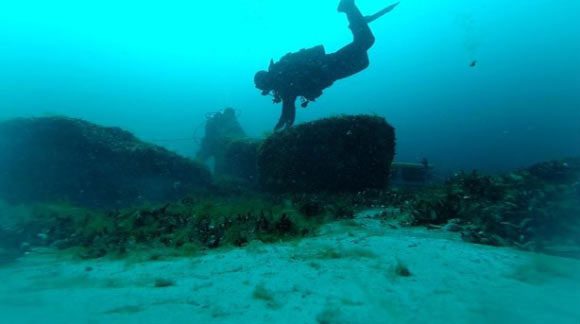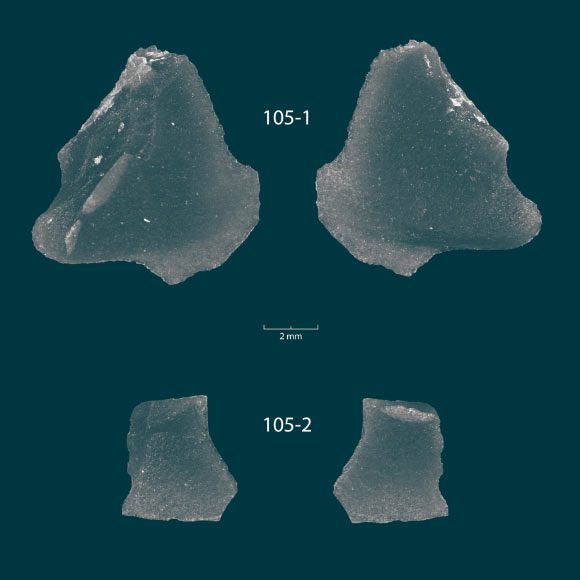Two Valuable Artifacts Made from Imported Obsidian Found in an Unexpected Location.
According to Heritage Daily, these are two tools made of obsidian, also known as “bottle glass” or “obsidian”, a type of volcanic glass. They were hand-excavated at a depth of 32 meters, in an area located between two ancient hunting grounds, submerged beneath the waters of Lake Huron in Eastern America.

An archaeologist excavating artifacts from the lake bed – (Photo: PLOS ONE).
This material holds significant value in modern times, used for making high-quality surgical knives or decorative gemstones. For Stone Age hunters, obsidian was even more precious because it could be easily shaped into the sharpest blades. Thus, this material has been widely used and traded throughout much of human history.
Specifically, the two obsidian tools found at the bottom of the lake hold three unique values. According to Sci-News, first, they are incredibly valuable artifacts, not only for their material but also because of their 9,000-year-old age. Second, they exemplify the crafting and tool-using skills of the hunters who settled in America during ancient times.
Third, the source of the obsidian has been identified as coming from a very distant location – the Rocky Mountains in the Northwestern United States – indicating that these items were traded, providing evidence of trade activities! For archaeologists, this is a rather shocking detail.

Two pieces of obsidian are two valuable ancient tools, a significant treasure in terms of material, craftsmanship, age, and history – (Photo: PLOS ONE).
Dr. Ashley Lemke, an anthropologist at the Department of Sociology and Anthropology at the University of Texas at Arlington, stated that this is a rare discovery. “These tiny artifacts reveal social connections across North America 9,000 years ago,” Dr. Lemke emphasized.
The preservation of this ancient site and its artifacts underwater has provided a “unique treasure,” as their integrity far surpasses similar structures on land.
The study was recently published in PLOS One.





















































